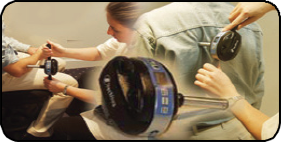|
|
|
|
|
|
|
|
What is Functional Evaluation?
|

|
Functional Evaluations (FE) is a structured process of observing and measuring an individual’s deficiencies. The individual performs a FE in order to identify potential performance deficits, safety issues, functional abilities, strengths, skills, and capacity to perform specific daily function-related tasks.
The purpose of a Functional Evaluation is to provide the physician with a baseline
and follow up data report evaluation. This is done by using the information gathered from a patient’s tested ability to reliably and safely sustain specified daily tasks. This assessment is undertaken with respect to the aforementioned patient’s abilities, which have been identified by either a physician or referral source.
The evaluation takes a kinesiophysical approach, i.e. the study of physical muscle and movement. Therefore, the test focuses on how muscle, joint function, and joint-specific range of motion impact a patient's ability to do his/her daily activities. This approach allows the evaluator to use kinesiological and medical knowledge, rather than subjectivity, to determine an individual's maximal, safe functional abilities.
|
“A true Functional Evaluation is composed of several components: ROM,
Muscle Testing, NIOSH Testing, Heart Rate Evaluation, Pinch Grip Testing, Hand Grip
Testing, and Functional Pain Assessments“
Functional Evaluations (FE's) are the best tool to evaluate Evidence-Based Medicine, as related to human performance. It applies to their functional abilities to:
- Move the Body in Space
- Negotiate Weight
- Grasp
- Perform Work Tasks
- Achieve Dynamic and Static Postures
The Functional Evaluation can demonstrate the effectiveness of treatment and/or intervention strategies. This can be an effective tool for:
- Identifying Goals
- Treatment Plans
- Effectiveness
- Can Support Further Care
- Need for Referral
|
|
|
|
|
|
|